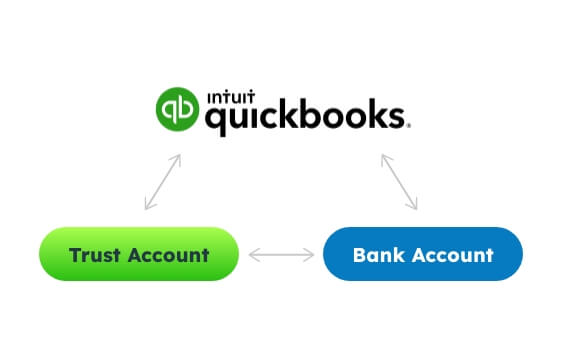
Most attorneys and other legal professionals did not choose to go into the field of law to do math equations.
Sure, you’re smart. And math is most likely not a foreign concept for you. But figuring out billable hours and breaking down time increments is more than likely not what you spent your time studying for when you were preparing to pass the bar.

Most lawyers and legal professionals are drawn to the intellectual work of solving complex legal problems, not math ones.
Finding ways that will help you stay true to your calling and do what you do best are going to be an important part of your law firm’s long-term success and your overall satisfaction with the career you’ve chosen.

Key Takeaways
- Though timekeeping and time tracking has changed throughout the years, one thing has remained constant: inaccuracies in tracking time and recording billable hours results in lost revenue and lost clients for law firms everywhere.
- Timekeeping and time tracking are tedious tasks that take an attorney away from serving their clients and practicing law — the reasons they became attorneys in the first place.
- Accurate billing no longer has to rest on the shoulders of attorneys, thanks to advancements in time tracking software that can be implemented into any law firm’s already existing practice management tech stack.
Whether we like it or not, accurate timekeeping and consistent time tracking are always going to be an important part of any attorney’s job.
The good news is, it’s now easier than ever to do, with minimal effort on your part.

What Does “Accurate Timekeeping” and “Consistent Time Tracking” Mean?
So what exactly do we mean by these terms and why are they important?
Accurate timekeeping and consistent time tracking are crucial for any attorney or law firm that wants to make sure that client invoices properly reflect the time spent on a specific area of their case.
Accurate timekeeping means that an attorney or their support staff will record the exact amount of time spent on a specific task or matter (usually rounded to the nearest 6 minute increment.)
Consistent time tracking means that an attorney or law firm will abide by the set billable time amount that was made clear on a client’s fee agreement for each matter and task that is done on the client’s behalf.
Making sure that accurate timekeeping and consistent time tracking is part of a law firm’s best practices means that all billable hours will be accounted for and that clients are accurately billed for the time spent on their matter.
Inaccurate timekeeping or inconsistent time tracking can result in underbilling or overbilling, both of which can negatively impact the attorney-client relationship and the financial health of the law firm (not to mention the attorneys that work there!)
Accurate and consistent timekeeping also allows attorneys to better understand their own productivity and identify areas where they may need to improve their efficiency.

Typically and traditionally, the responsibility of accurate timekeeping and consistent time tracking has fallen on attorneys themselves, though sometimes it is also a task that is relegated to their legal support staff — such as their paralegals or legal assistants.
Schedule a demo
And whether or not timekeeping and time tracking is done manually or with certain types of legal practice management software or legal billing software, it is a task that deserves high priority for any law firm, regardless of their size, location or area of law.
The bottom line is this…
Making sure that your law firm has a system in place that makes it easy for attorneys to accurately record their billable time — and to do it consistently — is going to be vitally important for your firm’s revenue and reputation.

The Beginning of Billable Hours
The history behind attorney’s billable hours dates back to the early 20th century when law firms started charging clients based on the time spent on their cases rather than a fixed fee.
This system of billing, known as the billable hour, became the norm in the legal industry and has remained so to this day.
When first adopted, lawyers would use manual ways to track time, typically by using paper timesheets or even index cards.
Keeping track of how many billable hours they had spent on one particular case or matter quickly became cumbersome and soon the challenge of making sure to track time accurately grew in importance for lawyers and law firms everywhere.
How the 10th Hour Time Increment Came into Play
After the adoption of the billable hour, clients began asking their lawyers for a more detailed breakdown of the billable hours that were showing up on their invoices.
In response to that, attorneys started using what is now known as a billing increment chart (sometimes also referred to as the attorney billable hours chart or 10th increment chart) as a way to break their billable hours into smaller increments, making it easier for clients to understand exactly how their money was being spent.
Today the billing increment chart has become a standard tool for tracking billable hours in the legal industry, and has been adopted by many law firms as a way to improve their billing practices and increase transparency with clients.

How Does the Billing Increment Chart Work?
The billing increment chart (or attorney billable hours chart) typically breaks down each hour into ten-minute increments, with each increment representing 0.1 of an hour, or 6 minutes. (Some law firms prefer to bill by larger increments, but that can lead to less accuracy and more client frustration.)
When using a billing increment chart, an attorney will record the amount of time they spend on various tasks throughout the day, including client meetings, research, drafting documents, and attending court hearings.
They then round the time spent on each task to the nearest tenth of an hour, and multiply it by their hourly rate to calculate the fee to be billed to the client.
To understand this better, consider these legal billing entry examples, if an attorney spends 32 minutes drafting a document, they would record 0.5 hours on their chart, which is the equivalent of 30 minutes (0.5 x 60 = 30).
The billable hours chart helps ensure accurate timekeeping and consistent time tracking, helping to ensure that invoices go out with billable time recorded correctly and that there is complete transparency in the entire billing process.
But the billable hours chart has some big downsides as well.
For many attorneys, using the billable hours chart can lead to some significant frustration.
Not only can the process be tedious and time-consuming, but when you are attempting to break your time into 6 or 10-minute increments, there is a big risk that overbilling or underbilling is going to occur.
Think about it like this: if an attorney rounds up their time, this could easily lead to overbilling a client, which can hurt that relationship.
On the other hand, if an attorney rounds down their time, it may lead to underbilling, which can hurt the law firm’s revenue.
A billable hours chart was a vast improvement for revenue and client/attorney relationship when it was first introduced. But modern day law firms need more.

LeanLaw Timekeeping and Billing Software: The Next Step to Better Legal Billing for Your Law Firm
When you decide to integrate LeanLaw into your legal tech stack of software solutions, your attorneys will no longer need to worry about memorizing a billing increment chart or pulling out a calculator every time they complete a phone call or finish research on a particular case.
LeanLaw’s time tracking software is designed to do that for them.
Schedule a demo
With LeanLaw, your attorneys will have multiple easy ways to track time.
Whether they prefer to do it on their phone, desktop, laptop, or other device, they will simply enter the time spent on a task and an automatic increment calculation will be pushed to the appropriate client invoice in your firm’s QuickBooks Online application.
That’s it.
No more calculating, estimating, or guessing when it comes to trying to calculate billable time. No more waking up the next day and realizing that time increments were never recorded the day before.
No more missed revenue or unhappy clients.
Are you interested in learning more about how LeanLaw’s time tracking software can work for your firm?
Check out our free demo here.
Then let one of our legal billing experts show you how easy it is to introduce LeanLaw into your practice management.
Clients expect your lawyers to be good at knowing the law. Not at knowing mathematics.
Let us help you help your lawyers get back to doing what they do best…practicing law.





